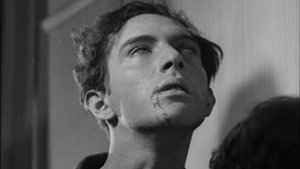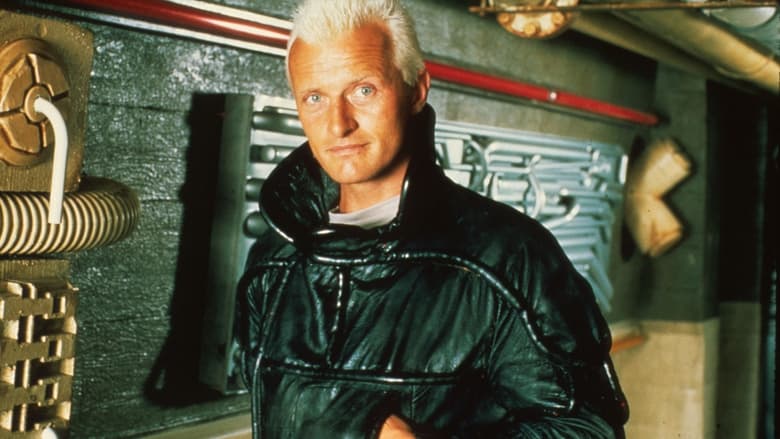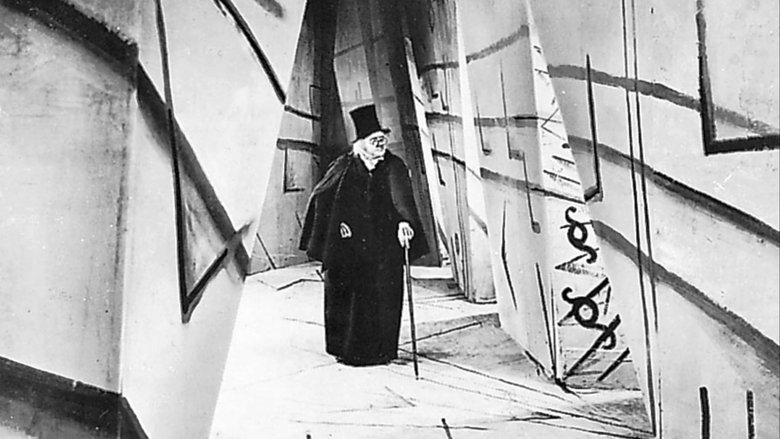Rare cinema: films that redefined storytelling
Explore a curated selection of films that pushed artistic boundaries and redefined storytelling. These cinematic gems, from silent era masterpieces to modern classics, offer unique perspectives and unforgettable experiences. Discover what makes them stand out in film history.



Delving into the realm of rare and influential cinema uncovers a treasure trove of films that have left an indelible mark on the art form. From the haunting expressionism of "The Cabinet of Dr. Caligari" (1920), which pioneered psychological horror and set a visual standard for decades, to the dystopian grandeur of Fritz Lang's "Metropolis" (1927), a film so ahead of its time that its influence can still be seen in contemporary sci-fi, these movies are more than just entertainment; they are cultural touchstones.
Consider Luis Buñuel's surrealist short "Un Chien Andalou" (1929), co-written with Salvador Dalí, which famously opens with an eyeball being sliced – a shocking image designed to challenge conventional narrative. Or the post-war realism of Vittorio De Sica's "Bicycle Thieves" (1948), a cornerstone of Italian neorealism that captured the struggles of ordinary people with profound empathy. Akira Kurosawa's "Rashomon" (1950) introduced the world to the concept of subjective truth through multiple perspectives, a narrative device still widely used today.
The list continues with films like Jean-Luc Godard's "Breathless" (1960), a French New Wave icon that broke cinematic rules, and Ingmar Bergman's "Persona" (1966), a psychological drama renowned for its complex exploration of identity. David Lynch, a master of the surreal, is represented by "Eraserhead" (1977), "Blue Velvet" (1986), and "Mulholland Drive" (2001), each a journey into the subconscious that defies easy categorization. Even more recent films like "Eternal Sunshine of the Spotless Mind" (2004) and "Pan's Labyrinth" (2006) demonstrate how these earlier, rarer works continue to inspire unique and challenging storytelling, proving that true cinematic artistry transcends time.
14. The Grand Budapest Hotel (2014)
Wes Anderson's The Grand Budapest Hotel (2014) is a delightful and meticulously crafted cinematic confection. This visually stunning film is a charming caper set in a luxurious European hotel between the world wars, following the adventures of its eccentric concierge, M. Gustave (Ralph Fiennes), and his loyal lobby boy, Zero. Anderson's signature symmetrical framing, whimsical humor, and intricate production design are on full, glorious display. It's a joyful, witty, and surprisingly heartfelt story about friendship, loyalty, and a bygone era, packed with an incredible ensemble cast. A true feast for the eyes and the soul!

13. Pan's Labyrinth (2006)
Guillermo del Toro's Pan's Labyrinth (2006) is a dark fairy tale for adults, set against the brutal backdrop of post-Civil War Spain. This visually stunning film seamlessly blends gritty historical drama with a fantastical underworld, where a young girl named Ofelia escapes the horrors of reality into a magical, yet dangerous, realm. Del Toro's creature design is exceptional, and the film's ability to balance beauty with genuine terror is remarkable. It's a poignant exploration of innocence, rebellion, and the power of imagination in the face of tyranny, executed with breathtaking artistry.

12. Eternal Sunshine of the Spotless Mind (2004)
Eternal Sunshine of the Spotless Mind (2004) is a truly inventive and poignant romantic drama that explores the complexities of love, loss, and memory. Directed by Michel Gondry and written by Charlie Kaufman, the film follows Joel (Jim Carrey) and Clementine (Kate Winslet) as they undergo a procedure to erase each other from their minds after a painful breakup. Its non-linear structure and surreal visuals perfectly reflect the jumbled nature of memory and emotion. It's a deeply original and moving film that makes you question whether forgetting the bad parts of a relationship also means losing the good.

11. Mulholland Drive (2001)
David Lynch's Mulholland Drive (2001) is a bewildering and captivating puzzle box of a film. What begins as a seemingly straightforward noir mystery in Hollywood quickly spirals into a dreamlike, fragmented narrative that defies easy explanation. Naomi Watts delivers a powerhouse performance as both an aspiring actress and a mysterious amnesiac. Lynch weaves together themes of ambition, identity, and the dark side of the entertainment industry, creating a cinematic experience that is both frustratingly enigmatic and utterly mesmerizing. It's a film that demands multiple viewings and encourages endless interpretation.

10. Blue Velvet (1986)
Dive into the unsettlingly beautiful world of David Lynch's Blue Velvet (1986), a film that peels back the idyllic facade of small-town America to reveal a dark, sinister underbelly. Kyle MacLachlan plays a college student who discovers a severed ear, leading him into a dangerous liaison with a mysterious lounge singer (Isabella Rossellini) and a terrifying gangster (Dennis Hopper). Lynch masterfully blends suspense, noir elements, and surrealism, creating a mood that is both alluring and deeply disturbing. It's a Lynchian fever dream that explores innocence lost and the darkness lurking beneath the surface.

9. Blade Runner (1982)
Ridley Scott's Blade Runner (1982) is a neo-noir science fiction masterpiece that redefined the cyberpunk genre. Set in a dystopian Los Angeles of 2019, it follows Harrison Ford's Rick Deckard as he hunts down rogue synthetic humans called replicants. The film's breathtaking visual design, with its perpetually rainy, smoky, and neon-drenched cityscapes, created an aesthetic that has been endlessly imitated but never surpassed. It's a deeply philosophical film, raising profound questions about what it means to be human, memory, and artificial intelligence, all wrapped in a stunningly realized world.

8. Eraserhead (1977)
Prepare for a journey into the bizarre with David Lynch's directorial debut, Eraserhead (1977). This black-and-white, surrealist horror film is a truly unique and unsettling experience. It follows Henry Spencer, who lives in a decaying industrial landscape and grapples with a screaming, alien-like infant. Lynch's signature blend of unsettling sound design, industrial dread, and dream logic is on full display here, creating a profoundly unsettling atmosphere. It's not for the faint of heart, but for those who appreciate experimental and deeply strange cinema, it's an absolute cult classic.

7. Persona (1966)
Ingmar Bergman's Persona (1966) is a haunting and intensely psychological drama that delves deep into identity and the human psyche. Starring Liv Ullmann as an actress who suddenly stops speaking and Bibi Andersson as her nurse, the film explores the blurred lines between their personalities. Bergman's stark black-and-white cinematography and close-ups create an intimate, almost suffocating atmosphere, forcing the audience to confront uncomfortable truths. It's a challenging but incredibly rewarding film that stays with you, prompting deep reflection on self and connection.

6. Breathless (1960)
Jump into the rebellious spirit of the French New Wave with Jean-Luc Godard's Breathless (1960)! This film shattered cinematic conventions with its audacious jump cuts, improvisational dialogue, and handheld camera work, giving it a raw, spontaneous energy. Starring Jean-Paul Belmondo as a charming petty criminal and Jean Seberg as his American girlfriend, it's a stylish and cool ride through the streets of Paris. Godard's playful disregard for traditional narrative paved the way for countless filmmakers, making it a truly groundbreaking piece of cinema that still feels fresh and exciting today.

5. Rashomon (1950)
Akira Kurosawa's Rashomon (1950) is a masterclass in subjective truth and narrative perspective. This Japanese classic explores a single crime from multiple, conflicting viewpoints, leaving the audience to grapple with the elusive nature of reality and memory. It's so influential that it coined the term 'Rashomon effect' to describe situations where an event is given contradictory accounts by different individuals. The film's innovative structure and its philosophical depth make it a compelling watch, demonstrating how Kurosawa was a visionary in reshaping cinematic storytelling.

4. Bicycle Thieves (1948)
Bicycle Thieves (1948) is a cornerstone of Italian Neorealism and a deeply moving film. Directed by Vittorio De Sica, it tells the poignant story of a father in post-war Rome desperately searching for his stolen bicycle, which is essential for his new job. The film famously used non-professional actors, lending an incredible authenticity to its raw portrayal of poverty and human struggle. It's a powerful, unvarnished look at the everyday heroism and despair of ordinary people, shot on location to capture the true essence of the city. The simplicity of its premise belies a profound emotional depth that will stay with you long after the credits roll.

3. Un Chien Andalou (1929)
Prepare to have your mind delightfully unspooled by Un Chien Andalou! This 1929 surrealist short film, a collaboration between Luis Buñuel and Salvador Dalí, is a truly singular experience. It famously opens with one of cinema's most shocking and iconic images, immediately signaling that you're in for something entirely different. There's no traditional plot here; instead, it's a stream of consciousness, a series of bizarre and dreamlike sequences designed to provoke and challenge. It's a foundational text for surrealism in film, offering a glimpse into the unfiltered subconscious. Don't try to understand it; just let it wash over you and embrace the beautiful absurdity.

2. Metropolis (1927)
Metropolis is an absolute marvel of cinematic ambition! This 1927 silent epic from Fritz Lang is a breathtaking vision of a dystopian future, boasting production design that still feels ahead of its time. Imagine a city divided between the opulent world of the rulers and the subterranean struggle of the workers—it's a visual feast that influenced countless sci-fi films to come. The scale of the sets, the intricate machinery, and the iconic robot Maria are truly astounding. Lang's meticulous direction and the sheer scope of this film make it a must-see for anyone interested in the roots of science fiction cinema. It's a powerful statement on class, technology, and humanity that resonates even today.

1. The Cabinet of Dr. Caligari (1920)
Step into the nightmarish world of The Cabinet of Dr. Caligari, a film that redefined cinema with its Expressionist artistry! Released in 1920, this German masterpiece isn't just a movie; it's a painting in motion, with sets so distorted and unsettling, they feel like they're plucked straight from a fever dream. The crooked angles and painted shadows are not just stylistic choices; they are integral to the plot, reflecting the warped reality of its characters. It's truly a landmark in film history, showcasing how visual design can be a character in itself. Prepare to be mesmerized by its unsettling beauty and innovative storytelling.

